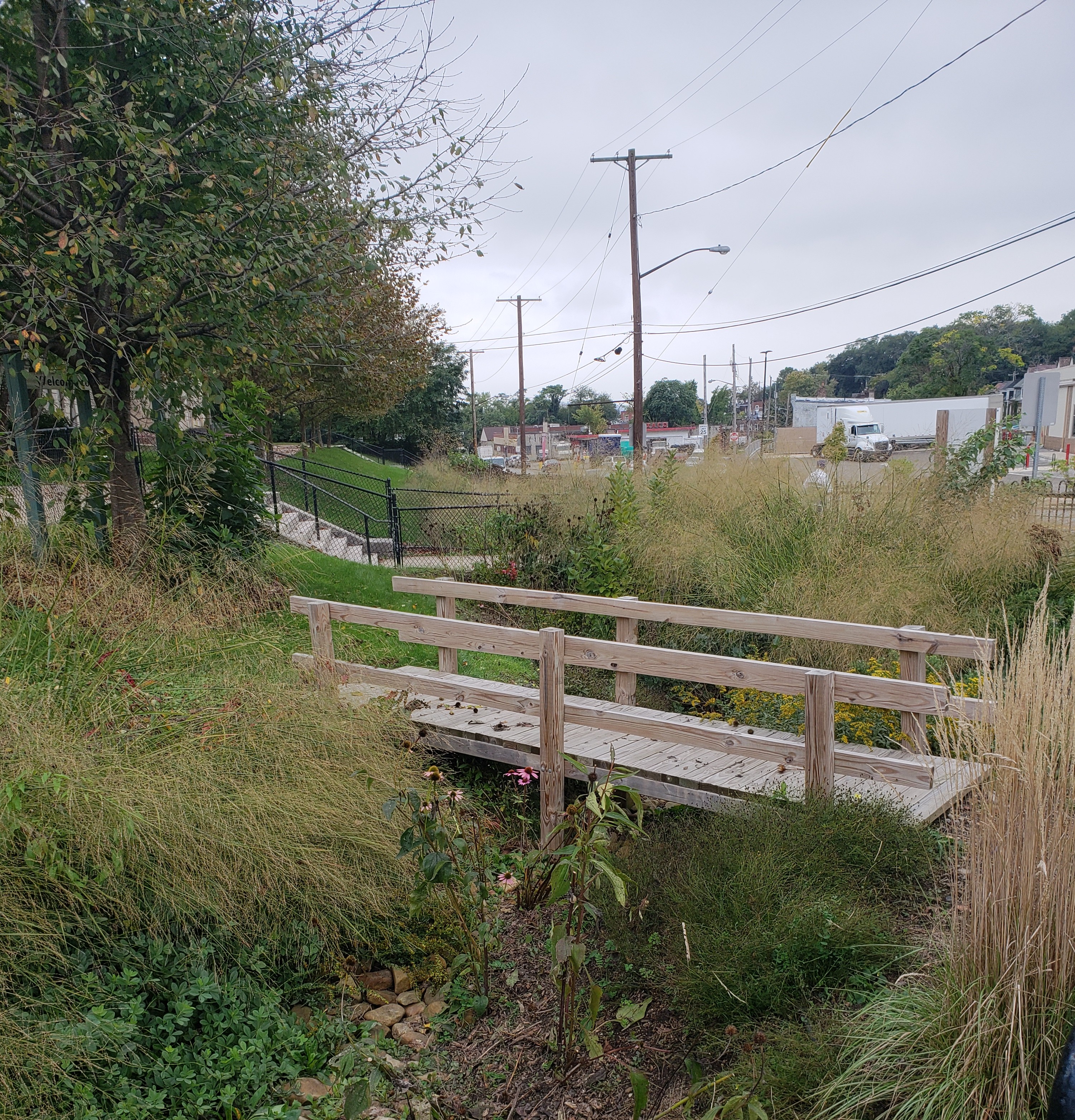
We are already seeing the impacts of a changing climate through heavy rain. Pittsburgh saw its highest record rainfall in 2018, and the record is on track to be beat once again in 2019. This is creating dangerous situations leading to hazardous flooding, landslides and damage to homes and property. As temperatures continue to rise, changing our climate, it’s important that we look to the future and better protect ourselves.
Across the country, infrastructure is in desperate need of updates. So when we are looking to our future, we must invest wisely in projects that simply make more sense, like green infrastructure. Green infrastructure, like rain gardens, trees, bioswales, and more are great solutions for communities. This technology, which mimics natural processes, manages stormwater by collecting the excess water in places where it will not cause harm. They also improve the look of our neighborhoods. More importantly, it grows as time goes on. Many gray technologies, like tunnels, don’t do more than one thing, like collecting combined sewage overflow.
Rain gardens are a great example of a multi-benefit green solution. Not only are they holding the stormwater in place - which can prevent combined sewage overflow, infrastructure degeneration, and flooding – they filter the water. Runoff from roads, agriculture, and industry are kept in spot with carefully selected vegetation that filters and evaporates the stormwater and keeps it out of our watersheds and homes. Rain gardens can also build habitat, which is always rapidly depleting due to development and other factors, as well as raise property values by creating green space that can be enjoyed by the community and improve the health of its residents. Many green projects use vegetation which we know is also important for improving air quality and reducing temperatures in urban spaces.
U.S. cities have already been putting these solutions into effect. Philadelphia is a great example of green city planning, where they are using green infrastructure to address the combined sewer overflow problem that Pittsburgh also faces. An analysis done of Philadelphia’s program showed that the benefits were also financial. It was estimated in 2016 that $1.2 billion over 25 years would provide $3.2 billion in benefits to the city, but it was even more than that when a second look was done in 2018. They found their green project actually produces $4 billion directly and indirectly with an average of 1160 jobs per year. Also, $22.7 million in recreational benefits and $50.1 million in health rated cost savings annually from increased activity, medical savings, and reductions in workers compensation.
In Pittsburgh, projects in Negley Run and Four Mile Run are examples of how planned, large scale projects are a vital part of our ability to live in a changing climate. These projects cover a large area allowing them to have greater impacts on the combined sewage overflow that pollutes our rivers, using a mixture of different green technologies like rain gardens, bioswales, tree planting, and more to manage stormwater in an effective, sustainable way. However, it cannot stop there. Allegheny County must be more of a leader in ensuring that green infrastructure and climate resiliency is a top priority in coming years by investing in research, planning, and projects that will help control the rain and utilize it for good. One means of ensuring that is providing greater resources to the Green Revitalization of Our Waterways (GROW) grants, which provide municipalities with reimbursements for green infrastructure projects in their communities that help to reduce combined sewage overflow.
As we renovate more spaces we must continue to look towards more sustainable solutions, including green infrastructure, which is vital towards making sure we are implementing smart technology that’s good for everyone. We must be mindful and active in our communities to be sure that these solutions are the first choice rather than a novelty. After all, these infrastructure improvements come from rates paid by consumers to their wastewater authority.
One way to make sure your money is well spent and that green infrastructure becomes a greater focus in our regions is to comment before November 29th on the current consent decree between ALCOSAN, the Environmental Protection Agency and the Department of Justice. The plan right now puts most available resources – over $2 billion – towards a costly tunnel system to address the raw sewage that get dumped into our rivers. This will not provide the myriad benefits we would see with a green first plan across the service area. We must get as much as possible out of an investment this large. Comment today to say you want your money to be invested in a green infrastructure future!



